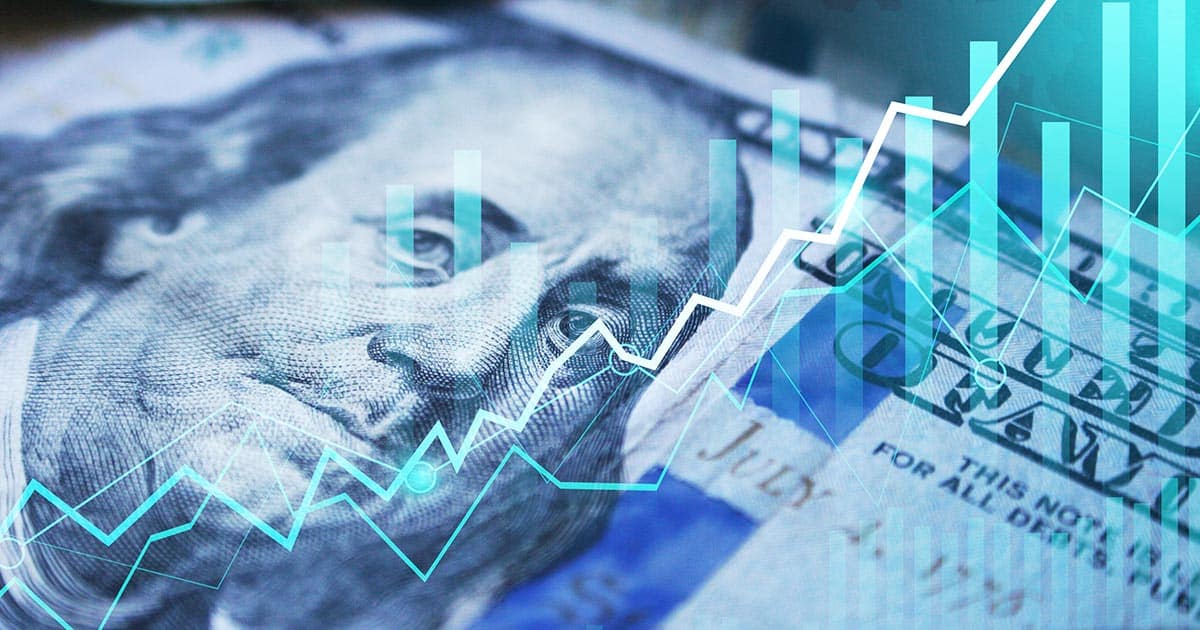
There are two primary methods for calculating and tracking inflation. Both methods are informed by the cost of goods, but one tracks changes in prices for everyday items, and the other calculates a broader view of spending patterns.
Methods Used to Calculate Inflation
Consumer Price Index (CPI)
The consumer price index is one of the most widely used methods for calculating inflation and deflation. It measures the monthly changes in the prices paid by U.S. customers. Government bodies like the Bureau of Labor Statistics calculate it as a weighted average of thousands of prices, which represent a basket of goods and services typically purchased by consumers.
The CPI includes categories like food, clothing, housing, medical care, and other elements like user fees and taxes. After the price data is gathered and weighted to reflect the spending behavior of U.S. households, it is divided by the data from the previous period.
Controversy of the CPI
Although the CPI measures changes in the cost of goods and services, it may not fully calculate changes in the purchasing power of a currency. Critics may also note that few methods can account for substitutions made by consumers facing inflated prices. For example, if the price of beef undergoes a dramatic increase, consumers may substitute chicken for their main protein.
Personal Consumption Expenditures Price Index (PCE)
The PCE is reported on by the Bureau of Economic Analysis, which collects much of the same spending data with weighted averages. Unlike the CPI, which assesses the price of goods and services, the PCE focuses on the total spending of a given period. This total is divided by data from the previous period to gauge inflation.
The PCE is issued in two versions: One addresses all spending categories and evaluates overall changes to prices and the second, a core PCE index, excludes energy and food costs.
Differences Between the CPI and PCE
| CPI | PCE | |
| Purpose | Tracks changes to price of commonly bought goods | Tracks changes in consumer spending |
| Composition | Focuses on a fixed basket of goods and services | Focuses on actual consumer spending |
| Coverage | Urban wage earners, excluding rural populations and the military | Encompasses all households, urban and rural |
| Components | Includes housing but excludes investment items like stocks and bonds | Encompasses a broad range of durable goods, non-durable goods, and services |
Limitations of the CPI and CPE
Both the CPI and CPE are useful for identifying inflationary issues, broad changes to spending habits, and emerging economic trends. However, neither can account for diversity in spending patterns, and both have difficulty expressing the true rate of inflation as it relates to the buying power of a dollar.
How does Inflation Impact Purchasing Power?
Calculating true inflation, or the real current purchasing power of money requires more than just CPI or CPE. These two tools are useful for evaluating economic data, but they have limitations. Purchasing power represents the amount of goods or services a currency can buy at a given time.
Calculations like CPI provide insight into the costs of goods and services but do not fully address the growth or loss of the value of a dollar. While the price of dinner may have risen, if the value of a dollar has fallen, then CPI may not account for the extra cost. Since the inflated price of dinner would be the extra cost of the meal as well as the cost in lost purchasing power to pay for the meal, it requires calculating both the lost purchasing power and the inflated price.
To calculate this, CPI is useful. Past purchasing power in recent dollars can be found by multiplying a dollar amount by the current period CPI and dividing that result by the past CPI.
If the past CPI is 20 and the current CPI is 10, the lost purchasing power of $1 would be found by using the following equation: ($1 x 10) ÷ 20 = 0.5. In this simplified example, the purchasing power of a dollar would be 50% of $1. In this case, the real inflation rate would be -50%. Negative inflation rates may indicate prices are rising faster than what the nominal CPI reports and it is paramount to consider real inflation when evaluating the impact inflation has on your portfolio.




